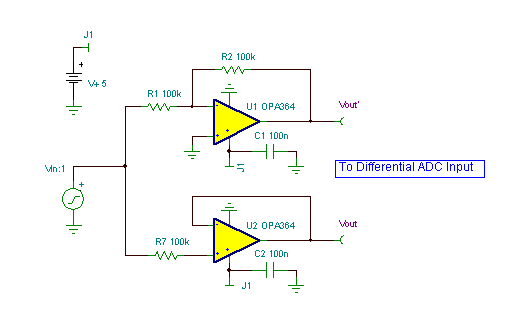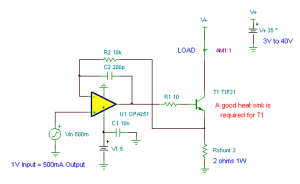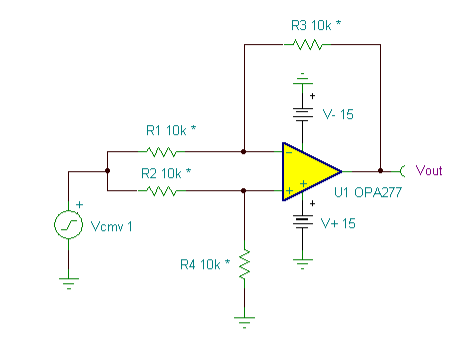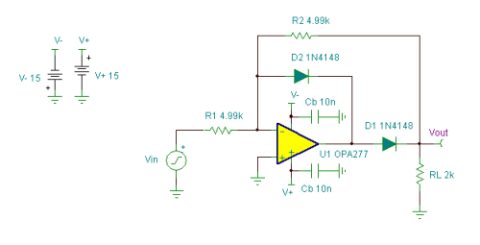Single-Supply Bipolar Input Differential Output Amplifier
The rail- to- rail input and output characteristics of these CMOS op amps allow them to swing very close to their supply rails– +5V and ground.
By using both an inverting and noninverting amplifier output to swing only positive due to their not being capable of swinging below ground (0V). The op amps each act like a perfect rectifier.
Due to its unique R-R input topology, the OPA364 exhibits very high linearity over its entire common- mode input voltage range.
This absolute- value amplifier has a gain of 1V/V and has an input range of within a few mV of -5V to +5V. (Circuit is created by Neil P. Albaugh, TI- Tucson)
Single-Supply Bipolar Input Differential Output Amplifier circuit:

Online Simulation of the Single-Supply Bipolar Input Differential Output Amplifier Circuit
The great feature of the TINA circuit simulator that you can analyze this circuit immediately with TINACloud the online version of TINA. Of course you can also run this circuit in the off-line version of TINA.
Click here to invoke TINACloud and analyze the circuit, or watch our tutorial video!
You can send this link to any TINACloud customers and they can immediately load it by a single click and then run using TINACloud.
Michael Koltai
www.tina.com




